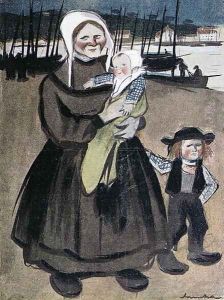Francisco Sancha y Lengo Paintings
Francisco Sancha y Lengo was a Spanish artist born in Madrid in 1825. He was primarily known for his work as an engraver and illustrator. Sancha y Lengo's career spanned much of the 19th century, a period in which the arts in Spain were influenced by Romanticism and later by Realism.
Sancha y Lengo's early life is not extensively documented, but it is known that he trained in the arts in Madrid. He honed his skills in engraving, a technique that requires precision and attention to detail. Engraving was a key method for reproducing images before the advent of modern printing technology, and it was particularly important for the dissemination of artworks, as well as for illustrations in books and periodicals.
Throughout his career, Sancha y Lengo contributed to various publications, providing illustrations that were then engraved and printed. His works often depicted scenes from daily life, history, and literature. These illustrations not only served as visual accompaniments to texts but also helped to popularize the stories and events they portrayed. His engravings are characterized by fine detail and a keen sense for texture and shading, which allowed him to achieve a high degree of realism in his prints.
Sancha y Lengo's work must also be understood within the context of the broader cultural and political developments of his time. The 19th century was a tumultuous period for Spain, marked by political unrest, wars, and social changes. Art during this period often reflected these upheavals, and engravers like Sancha y Lengo played a significant role in documenting and interpreting contemporary events for the public.
Though Francisco Sancha y Lengo may not be as widely recognized as some of his contemporaries, his contributions to the field of engraving and illustration were significant. His prints continue to be of interest to collectors and scholars of 19th-century Spanish art. Sancha y Lengo passed away in 1910, leaving behind a legacy as a meticulous and skilled engraver who captured the essence of his era through his art.
